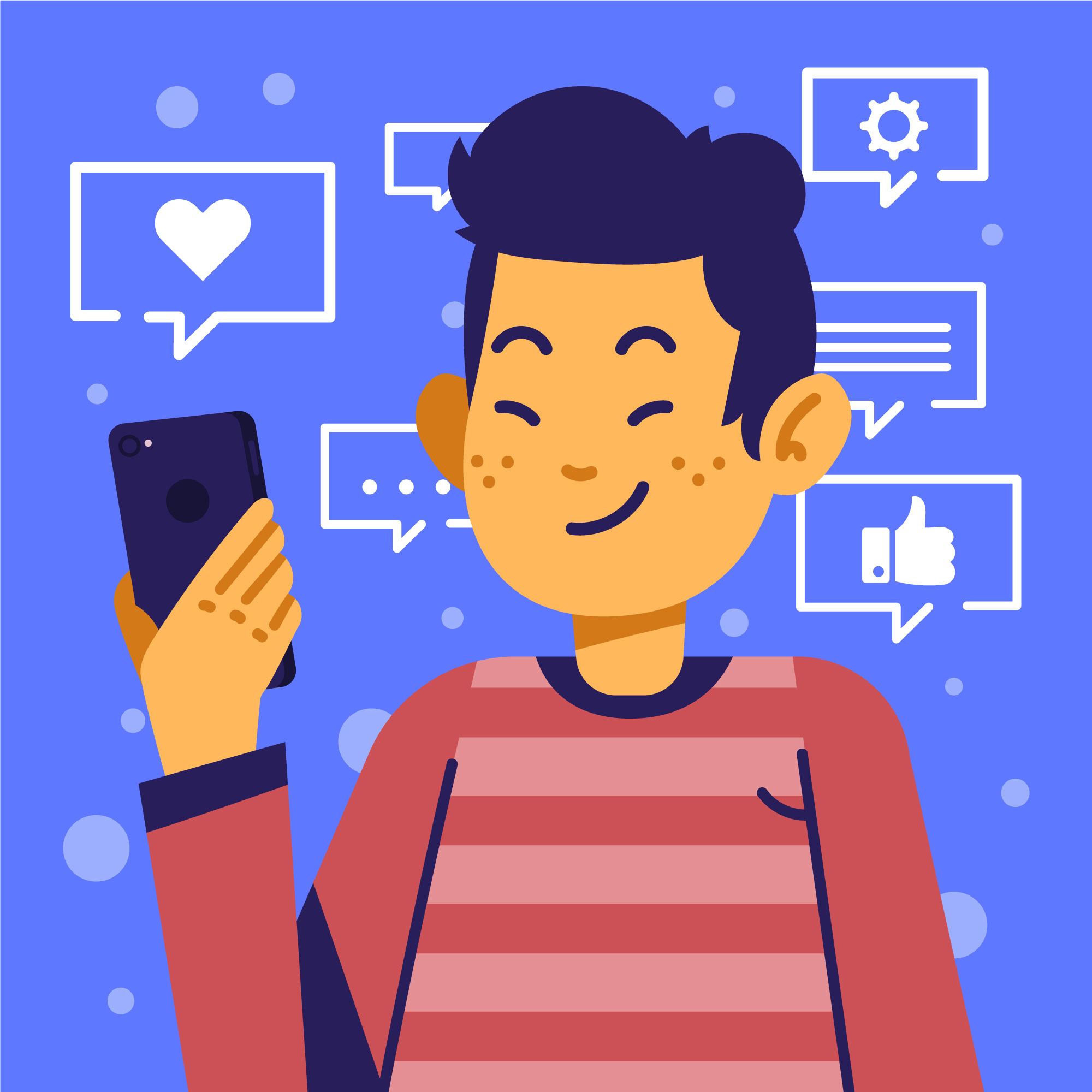Unveiling Human Behavior’s Role in UI/UX Design
Complete absorption into the lives of your target audience is necessary to design an empathetic experience. Interviews, personas, use cases, user flows, journey maps, focus groups, and other techniques are used in an educated effort to precisely engage the people you most want to influence, as the UX professional tenet “walk a mile in your customer’s shoes” suggests.
After the 1990s, the notion of creating interfaces for human communication that adhere to certain standards began to take shape. In order to give users a simpler and more intuitive experience, some design concepts were proposed as a consequence of research. A few design tenets have evolved over time in tandem with the shifting demographics. It’s odd that the values we’ve held, developed, and reaffirmed for so long are still so insignificant. What brings us to this state of carelessness? It seems that objective usefulness is not as important as relative beauty.
Understanding Humans Perspective
Many of the components minimize the need of having a thorough understanding of human behavior when applying design thinking. Although it may not be pleasant to hear, your ability to relate to and interact with end users depends more on your comprehension of their requirements, sentiments, and behavior than it does on your technical prowess. It is more about “What will they think and how will the user feel when using this feature” than it is about “I know the perfect features to fix in.” We’ll be analyzing human behavior today and exploring how to strike a balance between the design and human centricities in your thinking to prevent creating a product that will just irritate and eventually scare away customers.
To avoid designing a design that terrifies and dissatisfies users, we’ll examine human behaviors in this essay that will inspire a people-oriented design and help to balance minds.
1. Humans scan text by becoming impatient.

An earlier study on online page reading habits by NNGroup found that only 16% of users read every word on new pages, with 79% of users only scanning them. Even web pages are viewed more quickly than email newsletters. There’s no denying that knowing the typical online reader’s style provides you a leg up in producing
I would explain further. When you realize that the average user visits your website for less than a minute (some may visit for as little as 15 seconds), as a designer, you must take one of two actions:
- Clearly arrange the most crucial information so that impatient people won’t miss it, or
- Provide them with an amazing design technique that can captivate and hold their attention for the first five seconds, leaving them wanting more of your website.
The following concrete actions will not only help your design process accomplish its goals but also assist your users in understanding who you are and how to rapidly grab their attention:
- Use the Grouping Methodology: Making ensuring that objects that make sense visually also make sense conceptually is one of the best ways to ease the transition to scanning. As appropriate, group relevant contents (such as newspapers).
- Make lots of headings: We really cannot overstate how crucial hierarchies are to an effective design process. To draw attract and keep visitors’ attention, your headings and subheadings are crucial. They explain the purpose of each part and whether it is pertinent to the reader. Make the most use of them. However, approach it with energy.
- Keep it Short and Simple, but remember the basics: reading is made simple and easy by short paragraphs and texts, which are also easy on the eyes. Long paragraphs, on the other hand, are easier for readers to lose interest in since they are difficult to follow. They are also more difficult to skim than a collection of brief paragraphs. It’s likely no secret to you that simplicity is the new sophistication. It is important to remember to use readable font when simplifying.
- Divide the subject into manageable parts to make it easier: Organize lengthy statements into manageable chunks by separating them with commas. Nowadays, nearly everything can be separated into different constituents in design. As a result, you can let the user feed more quickly.
While you might not be able to completely prevent consumers from skimming over your sites, you might be able to prolong their browsing sessions. The longer they stay, the more likely it is that they will perform the tasks you have planned for them.
2. When it comes to slow adaption, humans find change weird.

It hurts to accept, yet everyone wants to stay the same, and nobody wants to change. People only adjust to change when it becomes necessary. You can’t compel customers to do anything in this fiercely competitive market.
When it comes to user interface and experience design, this shouldn’t be the case. Users of all strata can readily relate to the existing set of controlling legislation. So, unusual animals, would you please tone it down when creating strange objects or trying to alter the status quo while you’re trying to design for strangers?
Though it’s not necessary to start from scratch, change is a wonderful thing. However, you can always make them better. Adhere to UX laws as a guide for decisions and principles, as well as a point of reference to enhance overall usability.
Here are some recommendations:
- Employ design systems to guarantee consistency across an application, facilitating users’ quick learning, adaptation, and familiarization with a variety of components and parts.
- Similar to remixing a song, you don’t always need to include something completely new; just go with what works. It’s really dangerous. For instance, given how people hold their phones, there’s a reason why the navigation tab on most mobile apps appears near the bottom of the screen, where it is most accessible to 89.9% of users’ thumbs.
Great artists steal; good artists copy. Not much has changed. Thus, locate a gap and fill it. saves time and keeps people from feeling excluded.
3. People read instructions poorly (they assume things readily).

Instructions, especially ones that are extremely lengthy, are not appreciated or read by humans. Have you ever experienced the same sensation as soon as a website asks you to read its Terms and Conditions? Everybody has the same emotions.
For this reason, you would need to be clear in your directions while providing them. You won’t go somewhere by talking down to them or using flowery language. Make the design content precise instead, and make sure it guides the user to the main objective, pertinent links, or the required call to action button. Recall that you must strategically blend time and space since you are fighting against them.
Making the instructions visual based on where and when they could be is one approach to go. Pictures communicate a lot more than words and are a powerful attention-grabbing feature. For this reason, electronic device manuals make extensive use of graphical images. Additionally, the onboarding screens are an excellent approach for designers of mobile apps to convey instructions.
4. People are Emotional Beings by Nature

I’m not stating anything new when I remark that people are emotional beings. Human conduct is said to be correlated with six primary emotions: fear, anger, sadness, surprise, and disgust. In order to control human emotions through color, the psychology of color in UX/UI design aims to comprehend how human emotions react to the use of various hues.
Emotions facilitate improved communication between you and the users of your product or website, from demonstrating empathy to incorporating personality into your designs. Emotion contributes to the general feel-good factor of a website, in addition to making it quite approachable. People want to be regarded like people, not just as “website visitors.” An empathy-design approach is the thin line that separates that from what counteracts this desire.
Here’s how having a solid understanding of human emotions can offer you an advantage as a professional designer:
- Providing a personalized experience for the user: People are more likely to become entwined with items when they feel that an experience is tailored just for them.
- Give a brand some personality: People still want to connect with other people and be treated as such, even in the internet age. Incorporating their feelings into your design interactions fosters personality development and improves the relationship between your product and its user.
- Demonstrating empathy: When effectively conveyed throughout the design process, knowing and empathizing with the user’s feelings will help you achieve your ultimate design goals. Given that humans are highly emotional beings, specific colors can be used to elicit empathy and represent different emotions. For example, yellow works quite well to portray an enthusiastic message, yet a combination of white and purple might be used to represent elegance and tranquility.
- Boost user engagement and lower bounce rate: studies have shown that people are more likely to interact when they are emotionally invested in a topic. In fact, emotional ties play a major role in drawing and holding users’ attention for extended periods of time. Technically speaking, your engagement soars and your bounce rate is remarkably low.
Emotions are your greatest assets if you want to genuinely connect on a human level with the people who use your product. Most essential, they make the user remember you or your work for a long time. They provide the impression that you are a genuinely caring person.
Conclusion
To conclude, designing empathic experiences requires comprehensive knowledge of users’ behaviors, needs, and emotions. However, while design principles continue to evolve, the importance of objective usability tends to become less important compared to the relative beauty. In response to this, designers should focus on creating content that is sufficiently short, but visually engaging, compatible with scanning behaviors, leveraging existing user habits to reduce resistance to change, intuitive in its language, and design. In addition, empathy should be at the center of designs to help establish authentic relationships with the users. Ultimately, by adopting human-centric design principles, designers and creators can develop products that not only satisfy their target audience’s needs but also establish authentic and long-lasting connections. If you are looking for high quality web or app development services feel free to drop us a message

